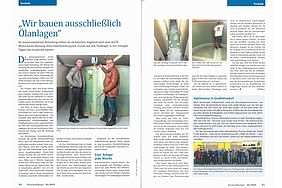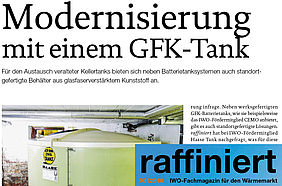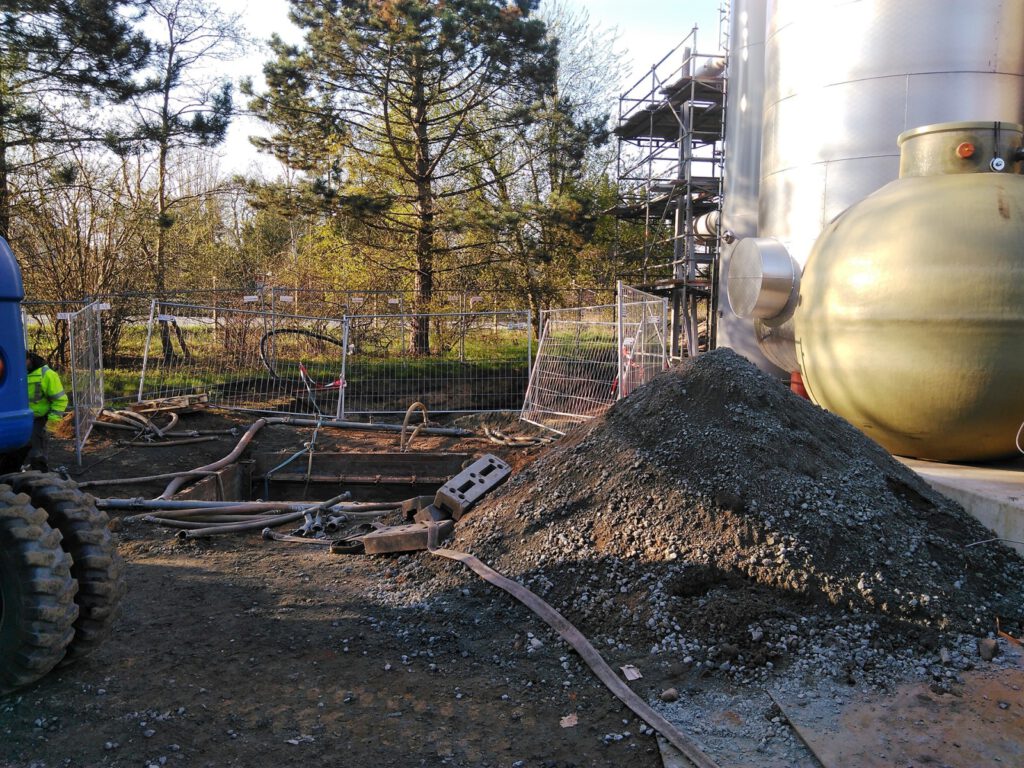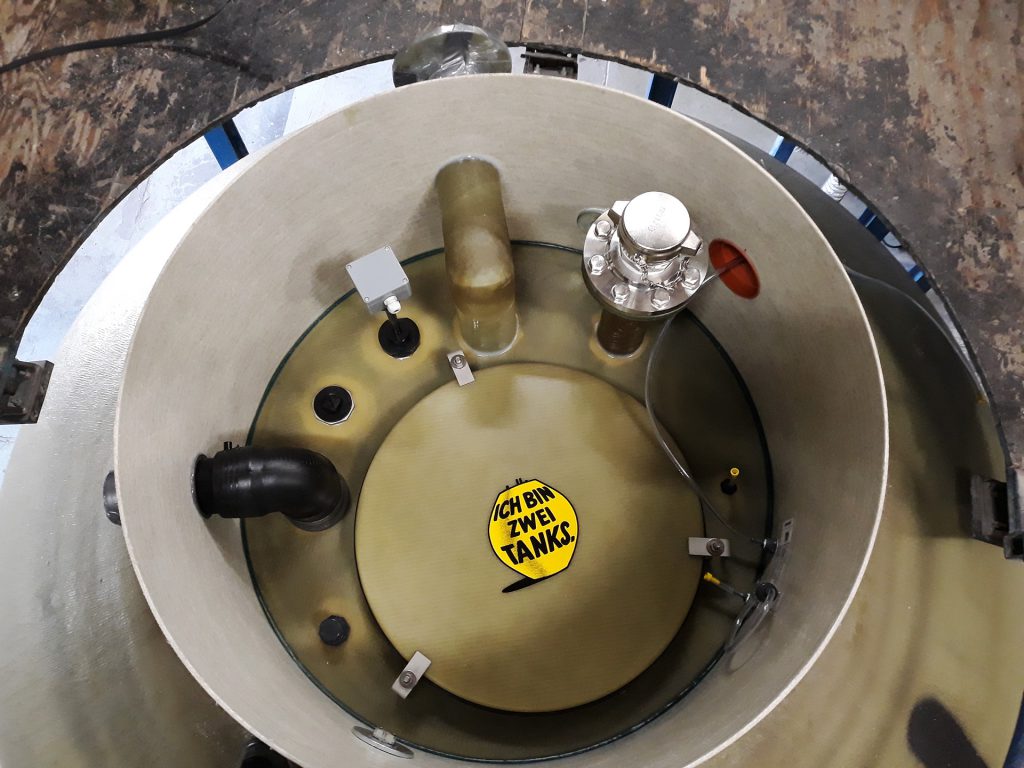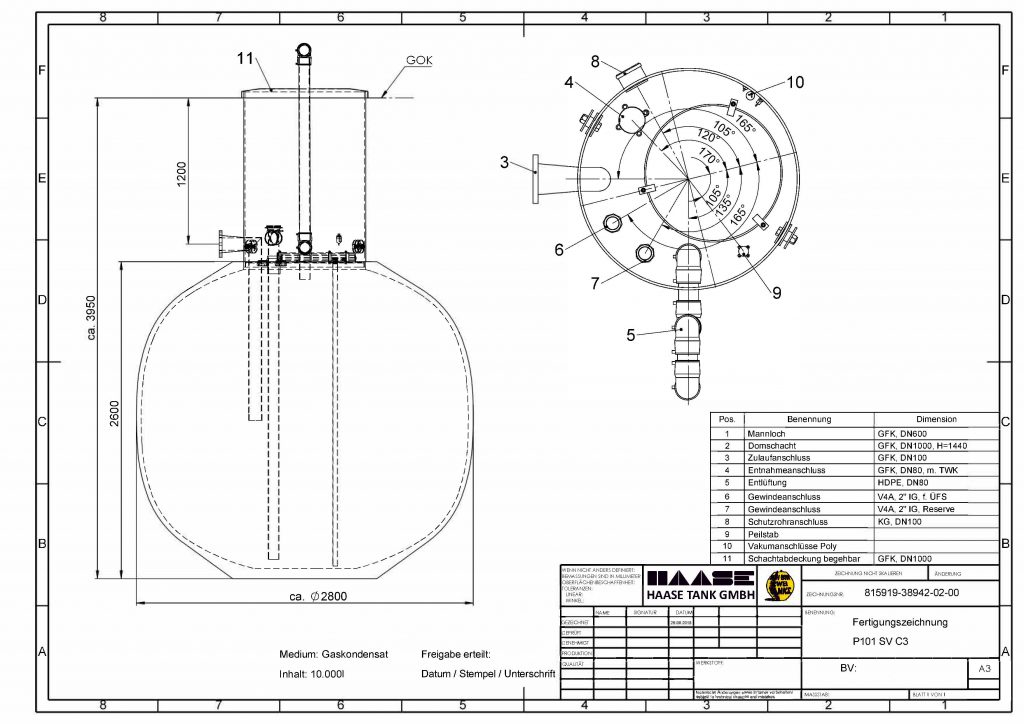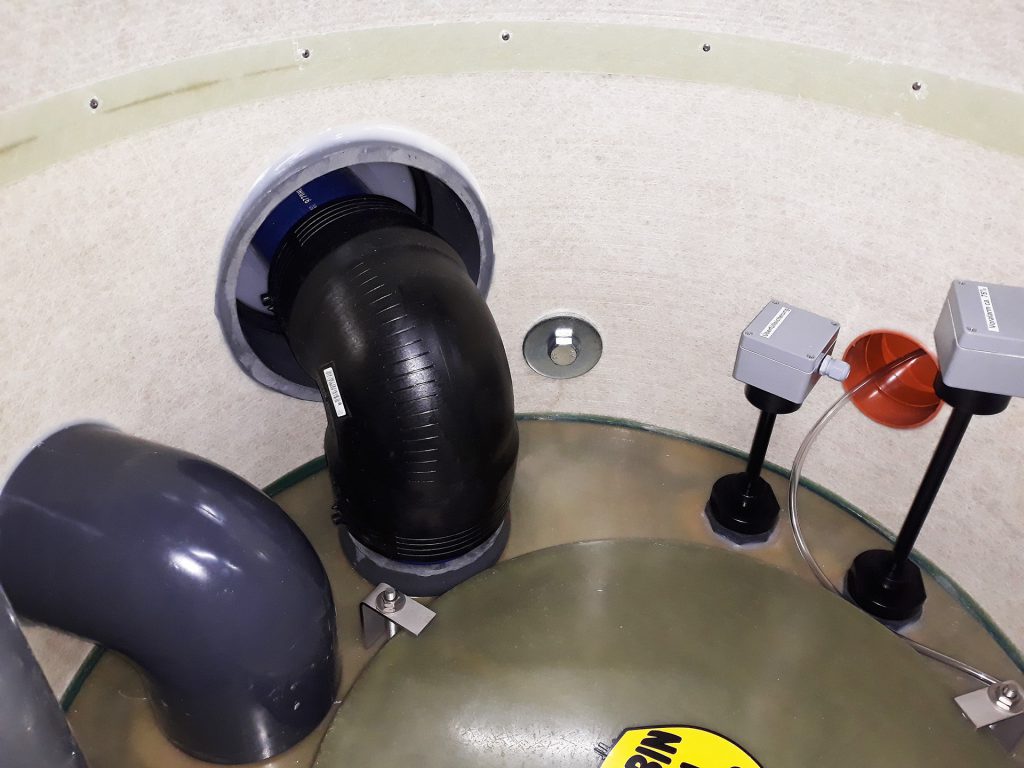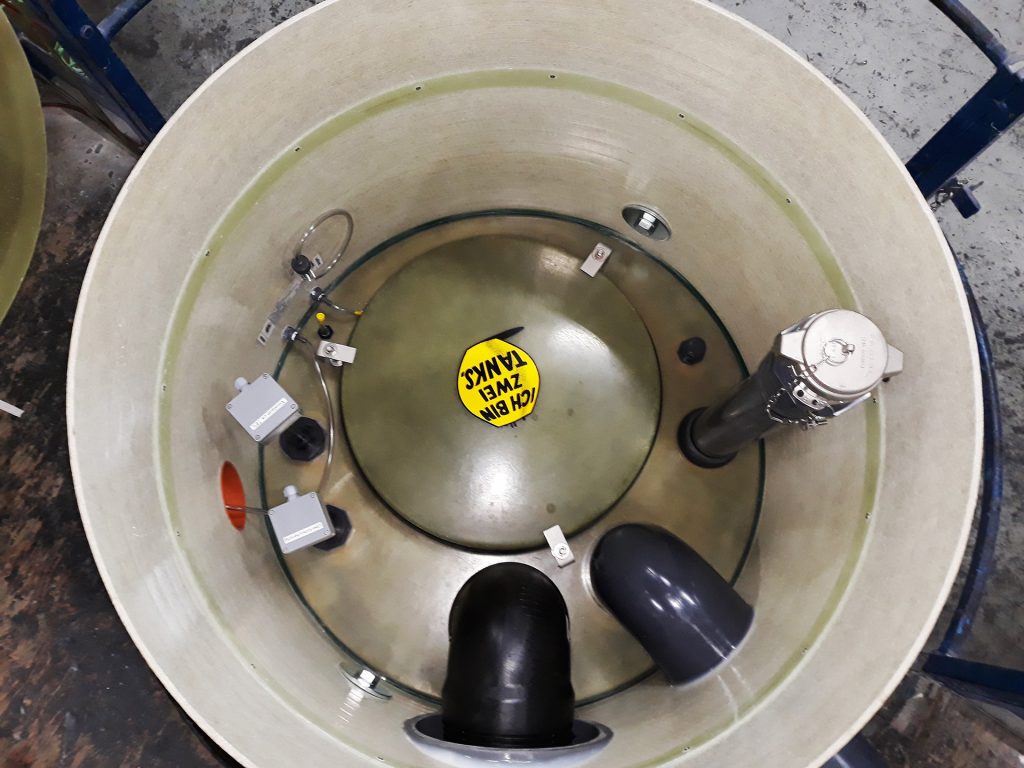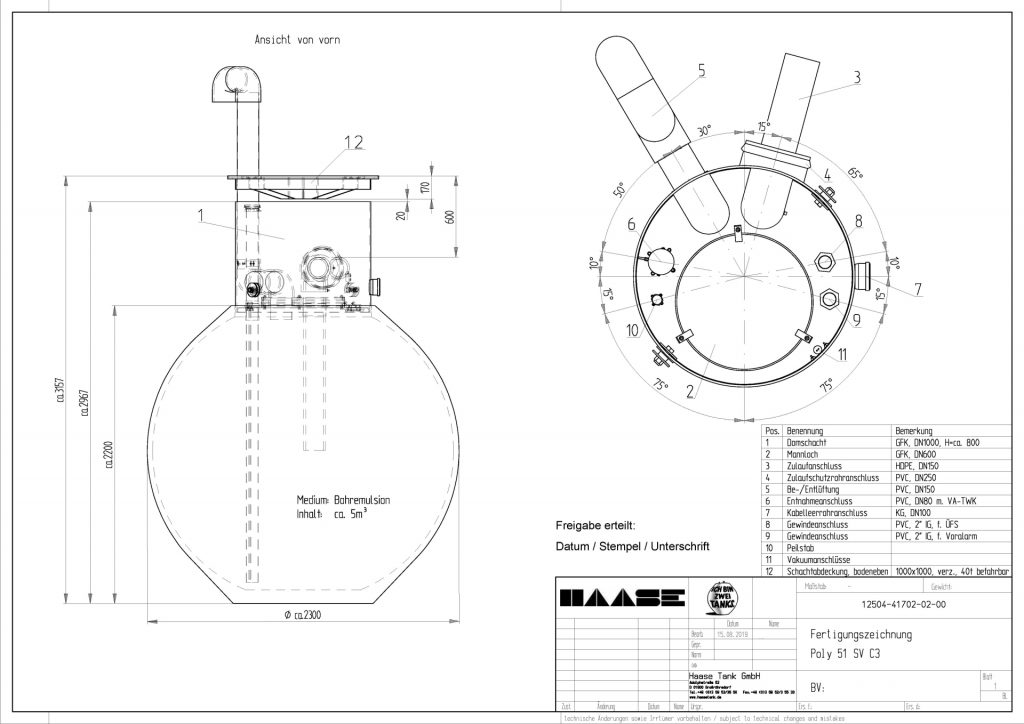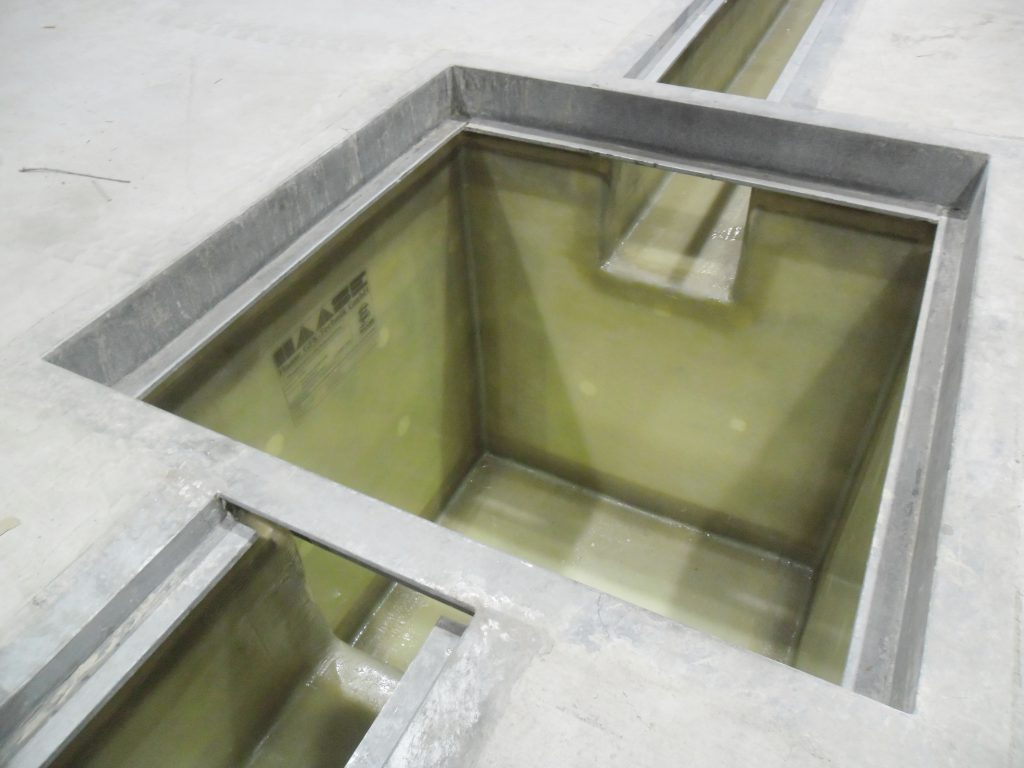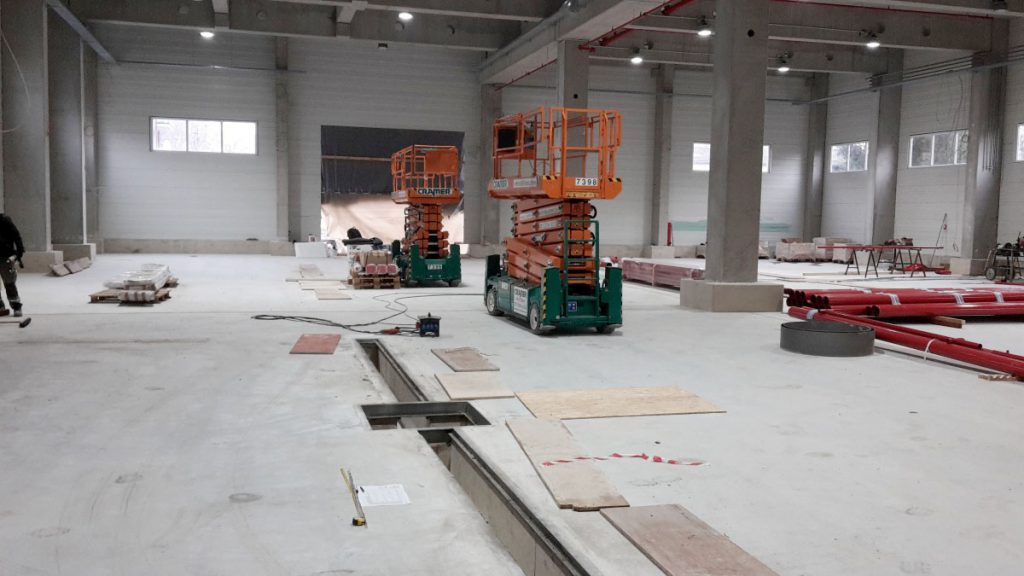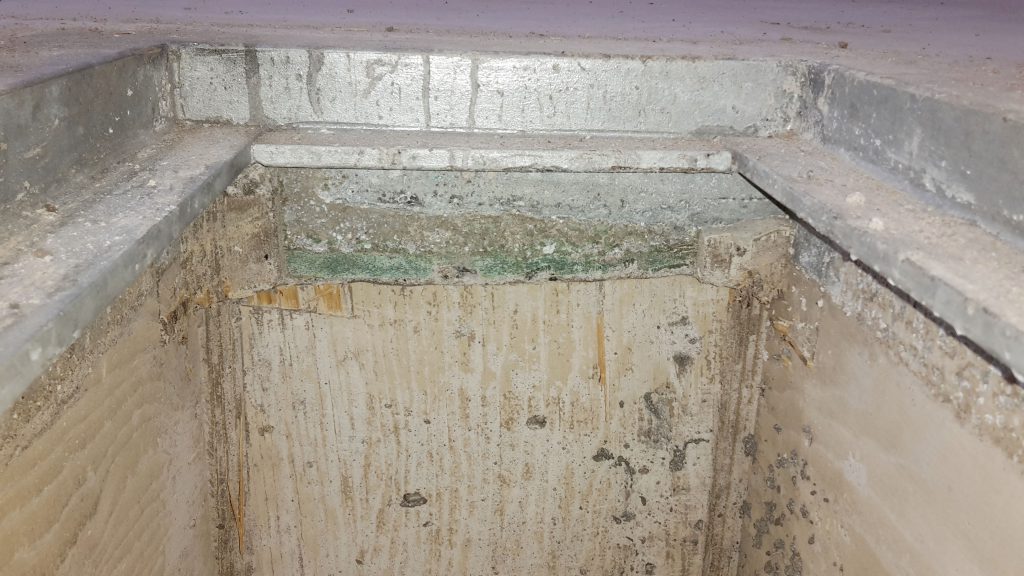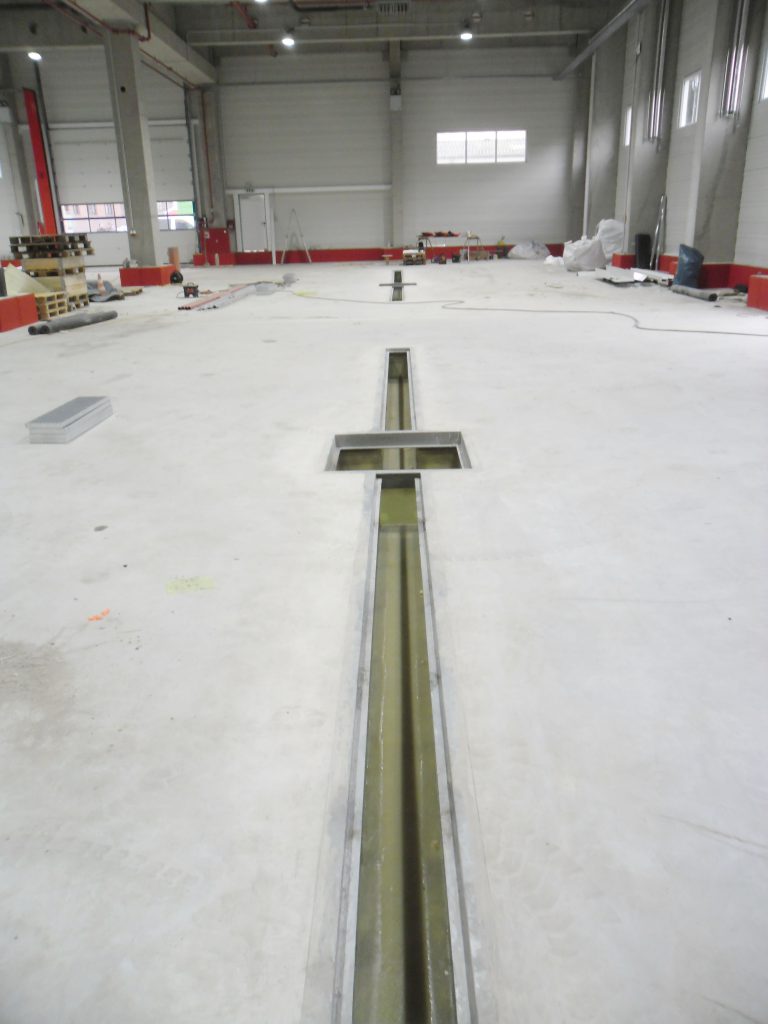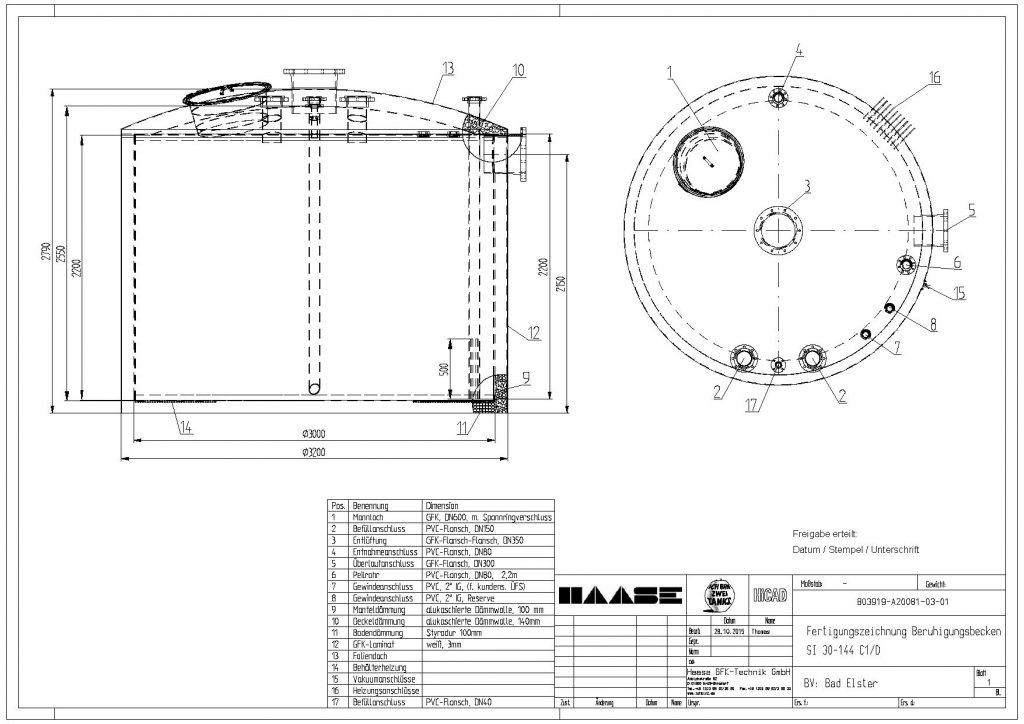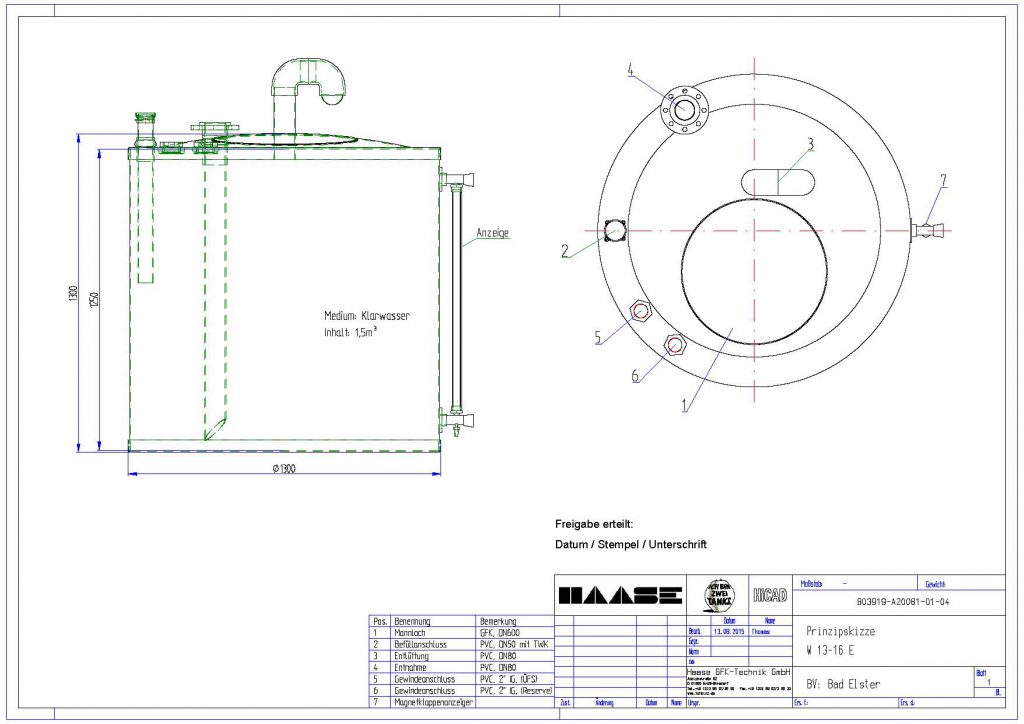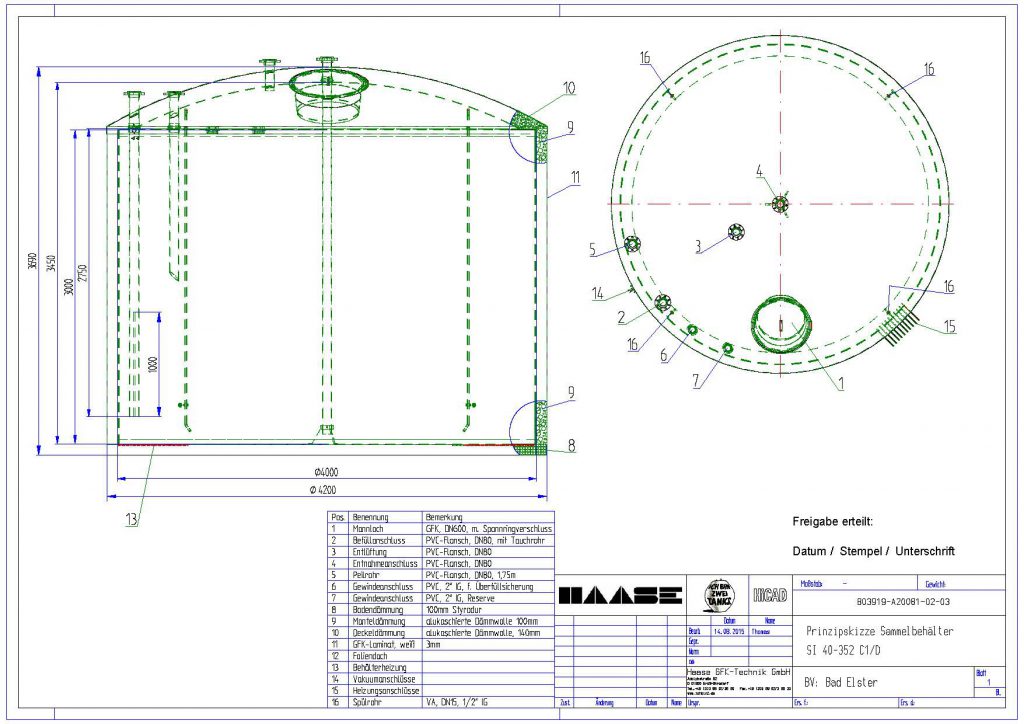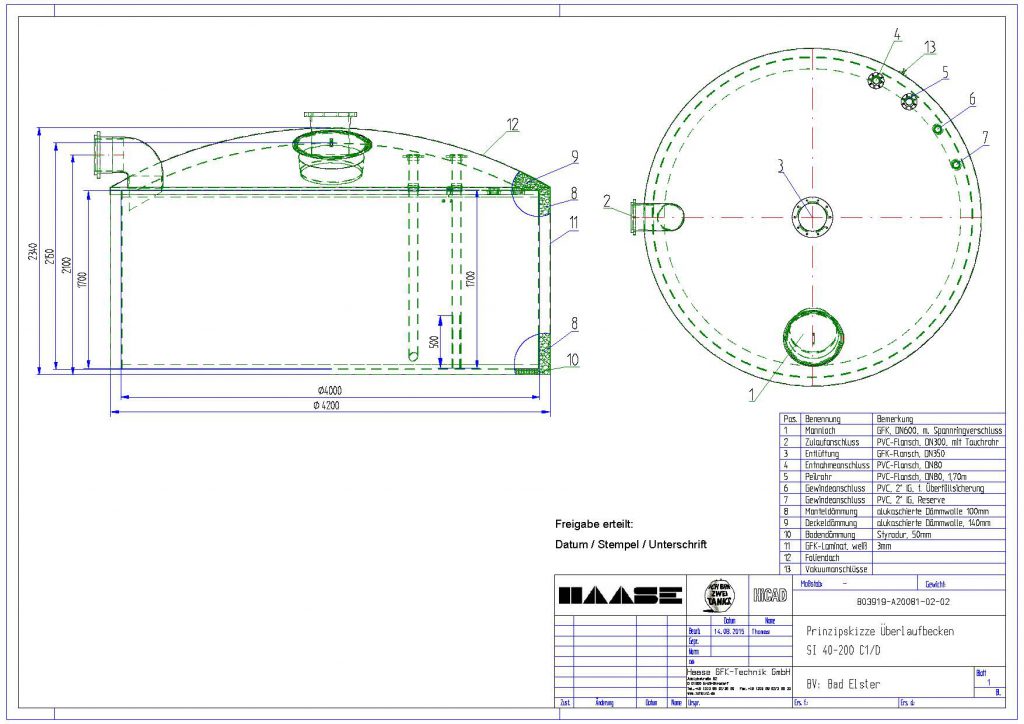The condensate generated in a combined heat and power plant is safely collected in the GRP storage tank.
Archives: References
This is where you can manage references.
Frankfurter brewery favorizes GRP separator
Frankfurter Brauhaus GmbH has renewed its light liquid and grease separators and will use glass fiber reinforced plastic (GRP) for these systems in the future.
The brewery in Frankfurt (Oder) belongs together with the Feldschlößchen brewery in Dresden and the Gilde brewery in Hanover to TCB-Beteiligungsgesellschaft mbH and ranks among the top ten brewery groups in Germany. The products are not only successfully sold under the name “Frankfurter”, but also private labels for large retail chains.
The new light liquid separator from Haase cleans, among other things, the wastewater from the forklift washroom. The grease separator for the factory canteen prevents grease from getting into the drainage network. In contrast to the products made of concrete, the GRP separators are corrosion-free and permanently sealed without any additional coating. Since the shaft also consists of the chemically resistant material, the beer manufacturer can look into a safe future without expensive renovation costs.
Thanks to the close cooperation with the construction company Böttner and the specialist office for environmental technology FMK, the Frankfurt brewery could be offered an all-round carefree package, from planning the separator to delivery and installation to initial commissioning and specialist training.
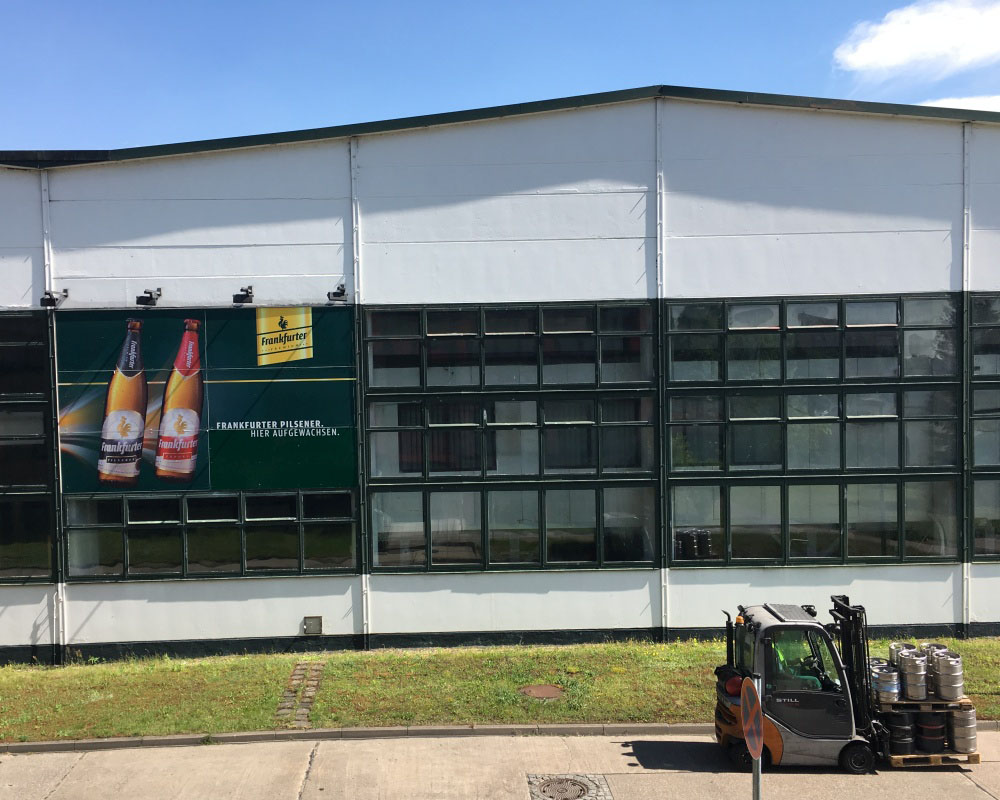
Frankfurter Brauhaus GmbH relies on an oil and fat separator from Haase. 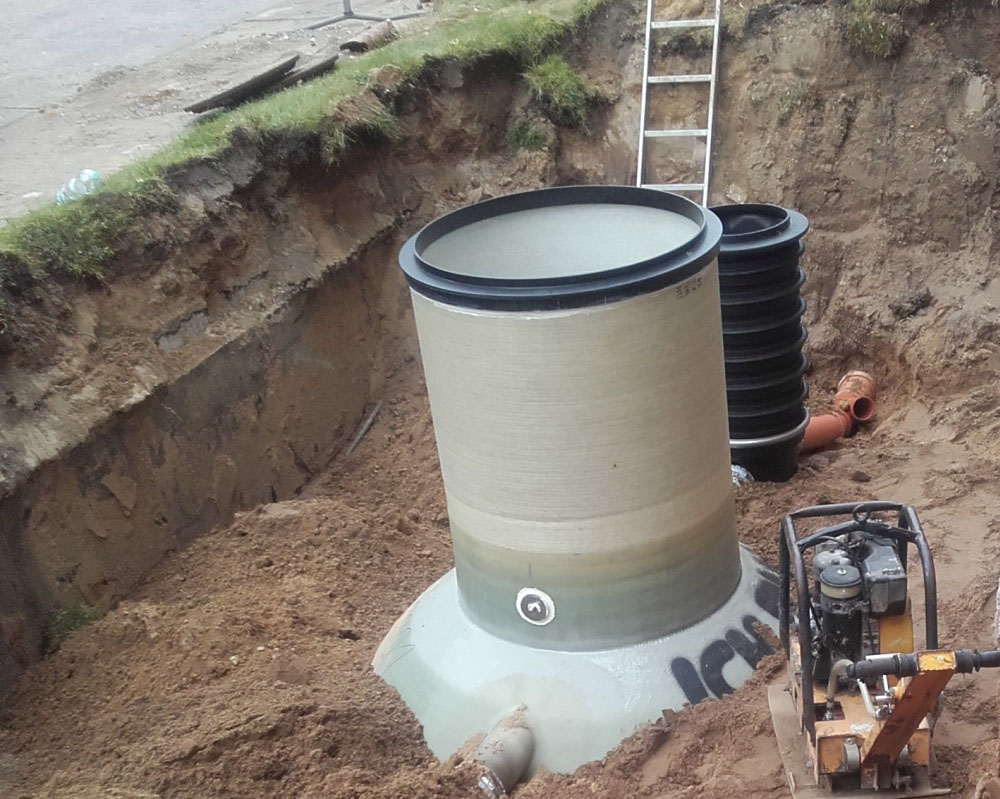
The fat separator for the factory canteen prevents grease from getting into the drainage network. 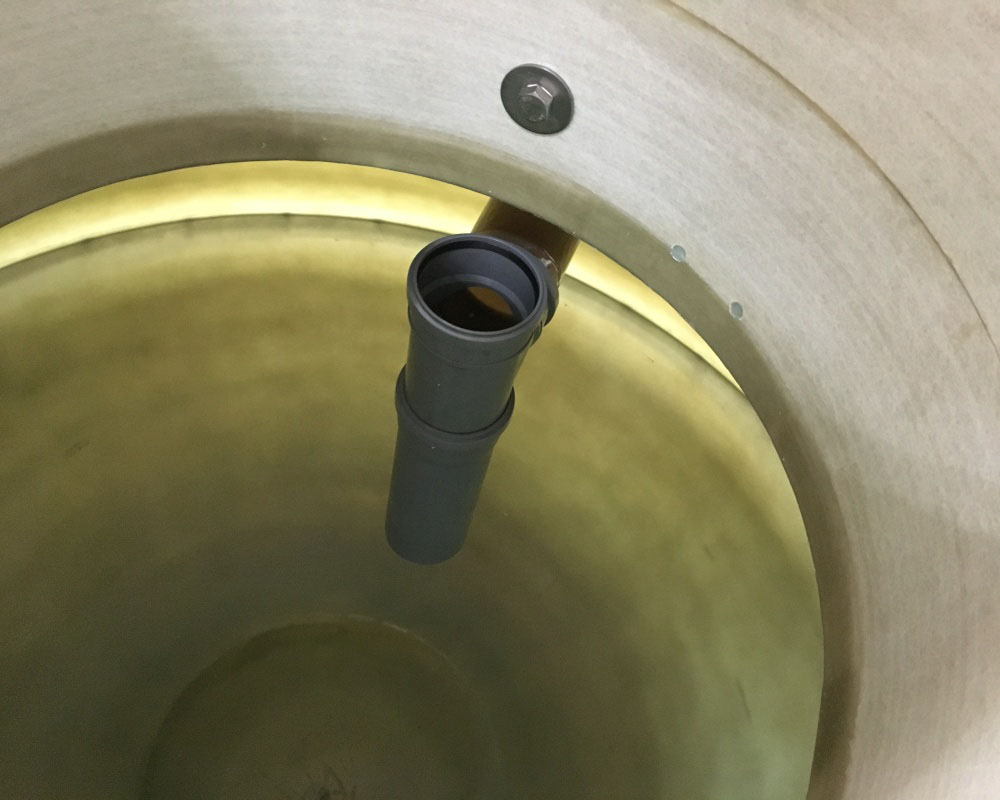
The high chemical resistance of GRP also applies to the shaft area from the separator and keeps it permanently sealed. 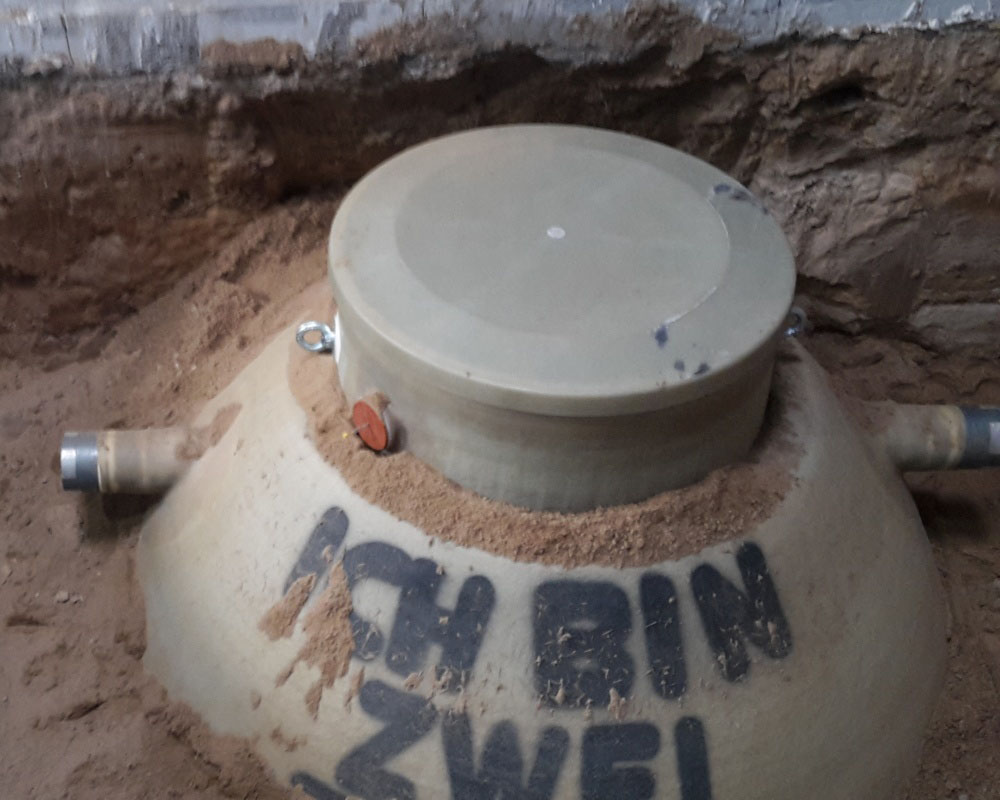
The GRP separators are contrary to the separators of concrete without further coating corrosion-free and permanently sealed.
Underground storage tank for drill emulsion
Leakage-monitored and double-walled storage tank made of GRP for the safe underground storage of drill emulsion and other water-polluting liquids.
Heat recovery system for new hotel construction with 125 rooms
The hot water distribution for this hotel, which was built in Belgium, was consistently geared towards efficiency and was therefore completely redesigned. The system is based on the Daikin VRV system and the Haase hot water tank (VRV stands for “Variable Refrigerant Volume” – “Variable Refrigerant Volume Flow”). It should save a total of over 200,000 kWh per year compared to conventional systems.
The aim of the overall system is to utilize the waste heat generated during the cooling phase of the VRV system used. This results in an hourly energy saving of approx. 50 kWh. Two additional VRV units are available for hot water generation if insufficient heat is recovered in the cooling process. This part of the system can deliver up to 100 kW per hour. The key to the success of the system is feeding the primary energy into the 14,900 liter hot water tank from Haase. The primary heating water circulates throughout the building, fresh water stations supply the hot water for the individual rooms on each floor via a heat exchanger system.
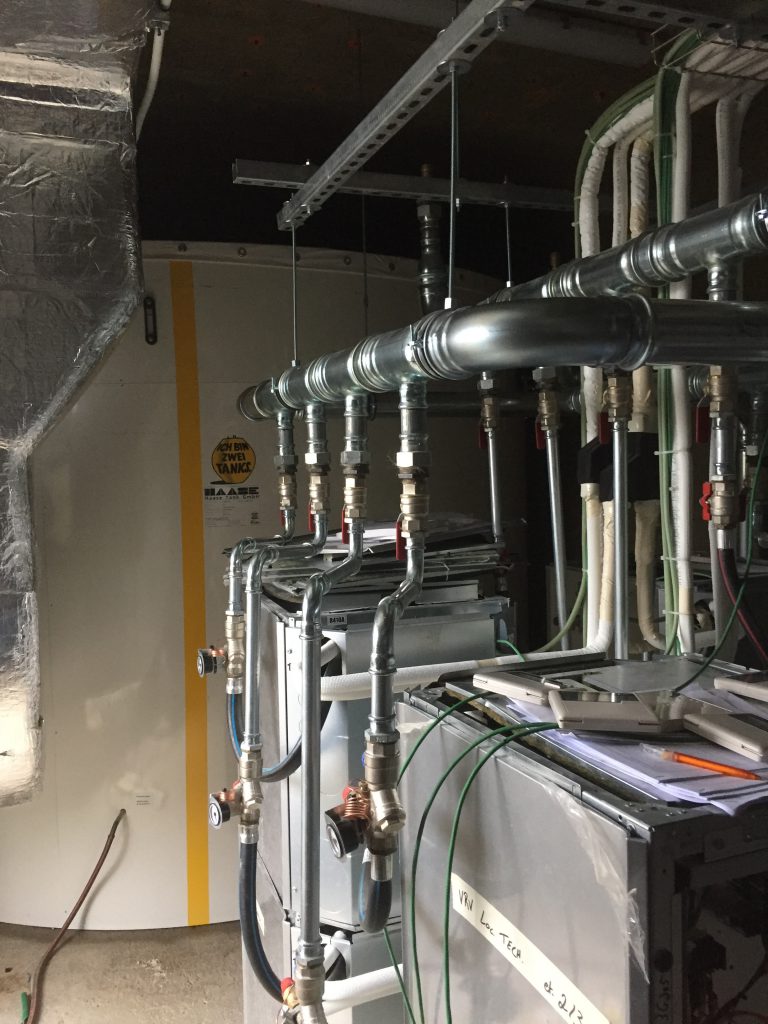
The hot water tank was integrated into the highly efficient hot water system of a hotel with 125 rooms. 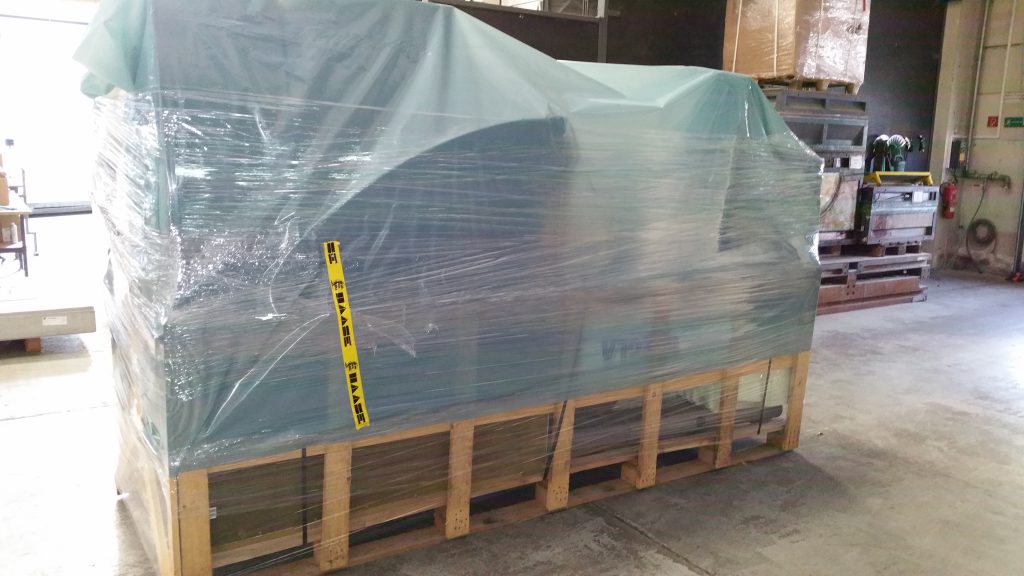
The individual parts of the hot water tank fit on a pallet. 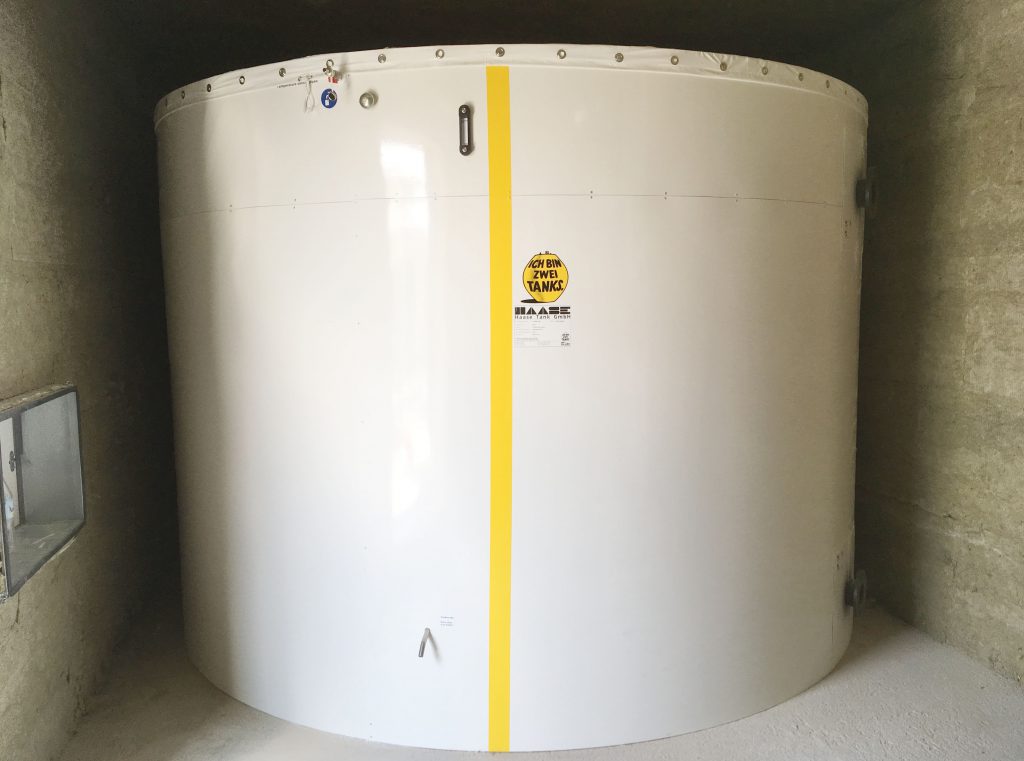
The hot water tank has a volume of 14,900 liters with a diameter of 3.50 m. 
The hot water tank was installed on the top floor shortly before the hotel opened.
Oil smell in the basement? Not with Haase heating oil tanks!
Many operators of a tank system know this:
The heating oil tanks made of polyethylene (PE) are not old at all, they actually still look good, are liquid-tight and even the drip pan is still in order. Nevertheless, the smell of heating oil has become unbearable not only in the tank room, but throughout the house. For our Haase customer from a small Saxon town, the switch to GRP tanks was therefore obvious. So he could be sure that the smell problem is a thing of the past once and for all. In the tank room there is now a container with a usable volume of 4,900 liters.
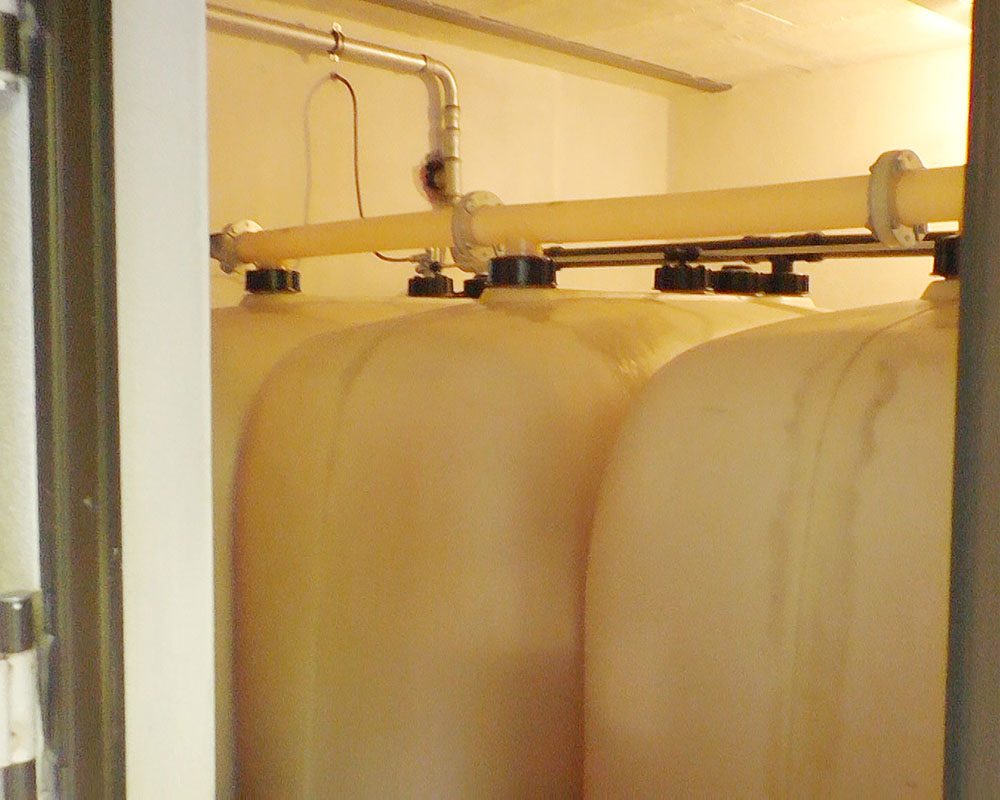
Although typical signs of aging of PE tanks (deformation, material fatigue, discoloration) are not yet visible: after a few years, the smell coming from the tank was no longer acceptable to the house residents. So what to do?
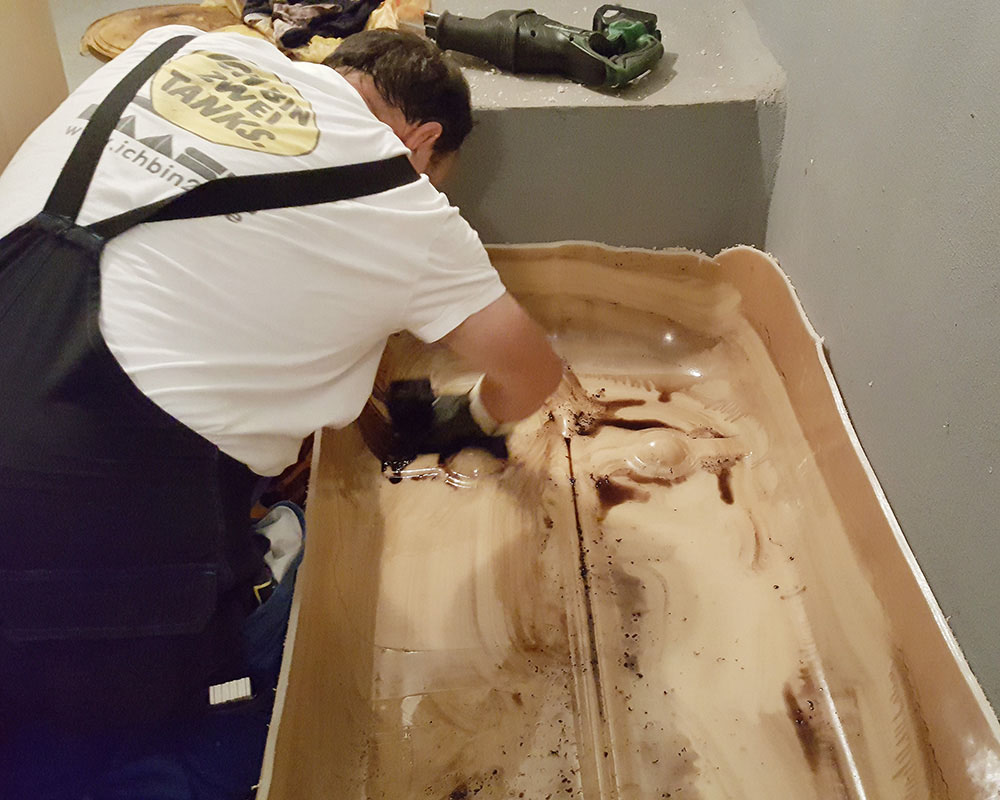
The existing heating oil was pumped out and stored temporarily. Afterwards, the old tanks could be cut, cleaned and disposed of properly. The operator received proof of this.
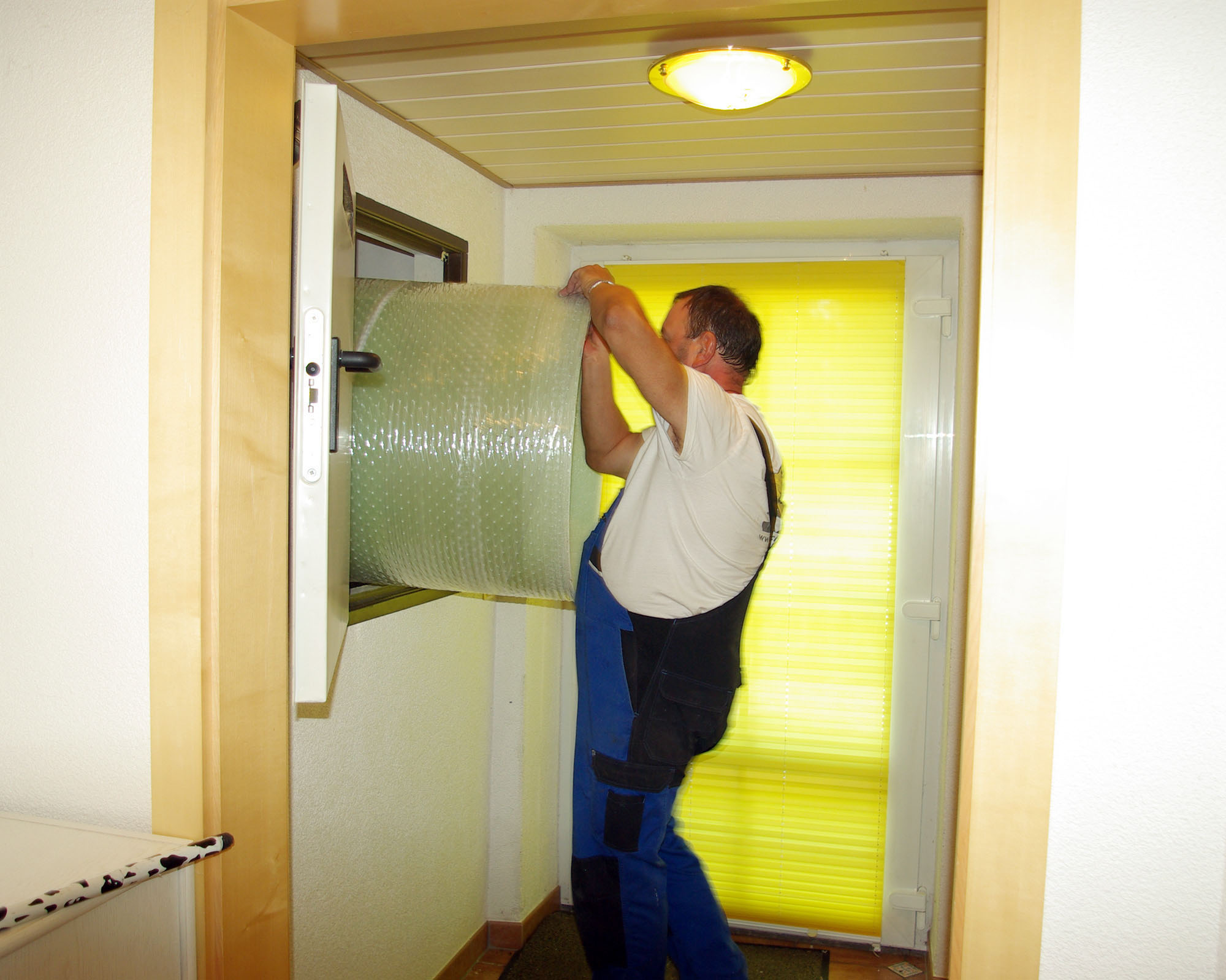
Here the inner wall of the tank is lifted into the installation room through the hatch. Haase basement tanks are delivered in individual parts and then assembled on site. Narrow entrances are therefore not a problem.
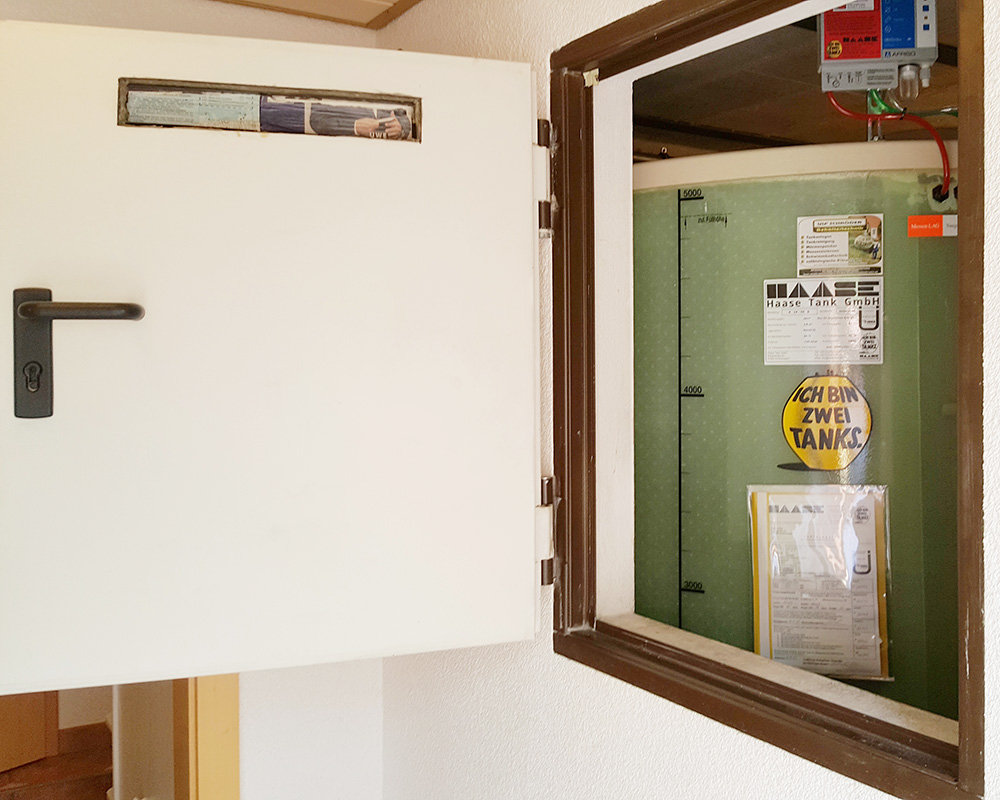
The double-walled tank is reconnected to the heating system, the tightness is automatically monitored and the intermediate oil is pumped back – done!
But the most important thing: nothing smells here permanently!
Gutters and pump wells lined with GRP
Keller & Bohacek GmbH & Co. KG, a medium-sized company in the chemical industry based in Düsseldorf, has been involved in the development, manufacture and sale of specialty chemicals for a wide variety of applications for decades.
The company always pursues the goal of being able to respond individually and very flexibly to customer requests based on the latest technologies in development and production. To meet this requirement, part of the production was recently completely rebuilt. Devices made of GRP (glass fiber reinforced plastic) have been used in the company for a long time to mix the chemical components. The reason for this is the high media resistance of the material to aggressive liquids. So it was obvious that the drainage channels and pump wells should also be made from this permanently sealed material.
Storage tank for fecal matter and domestic waste water
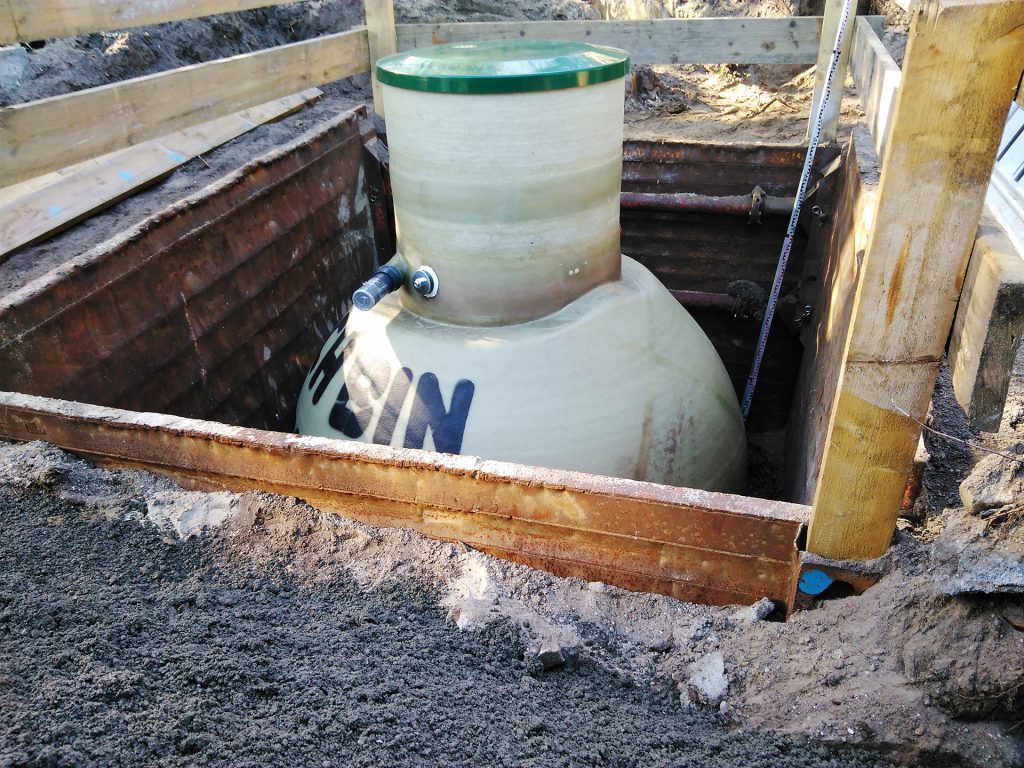
The underground storage tank Poly 51 SI C has a usable volume of 5,000 liters. 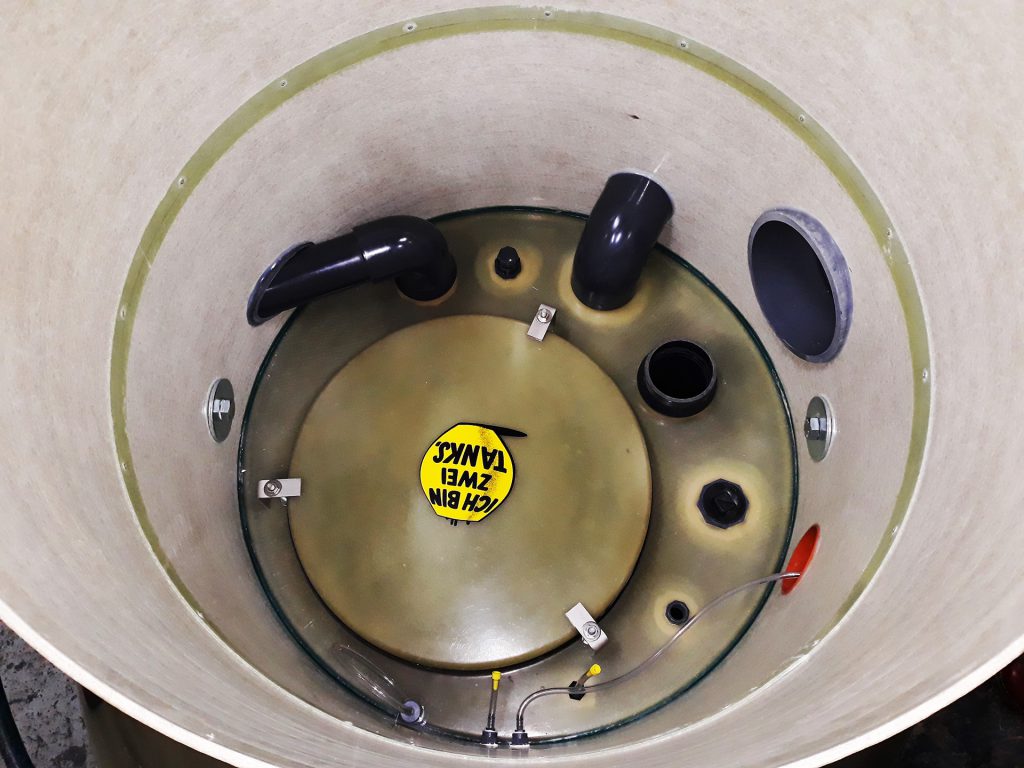
The type and arrangement of fittings and connections could be freely determined by the customer. 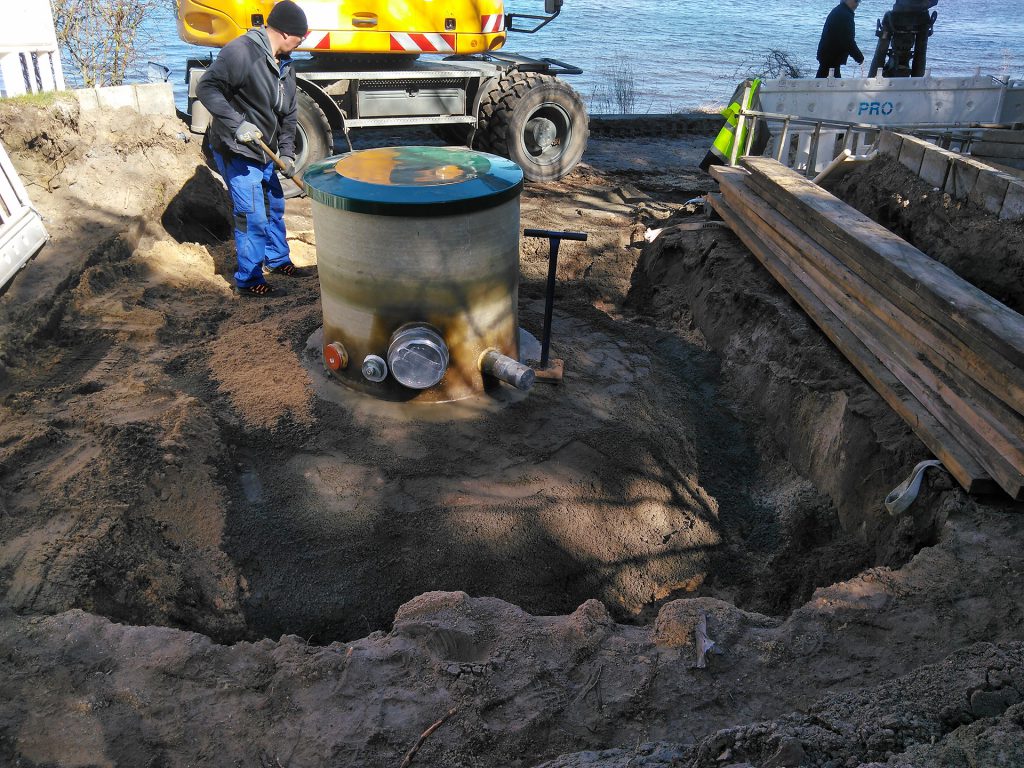
The height of the liquid-tight manhole made of GRP could already be made in the factory. 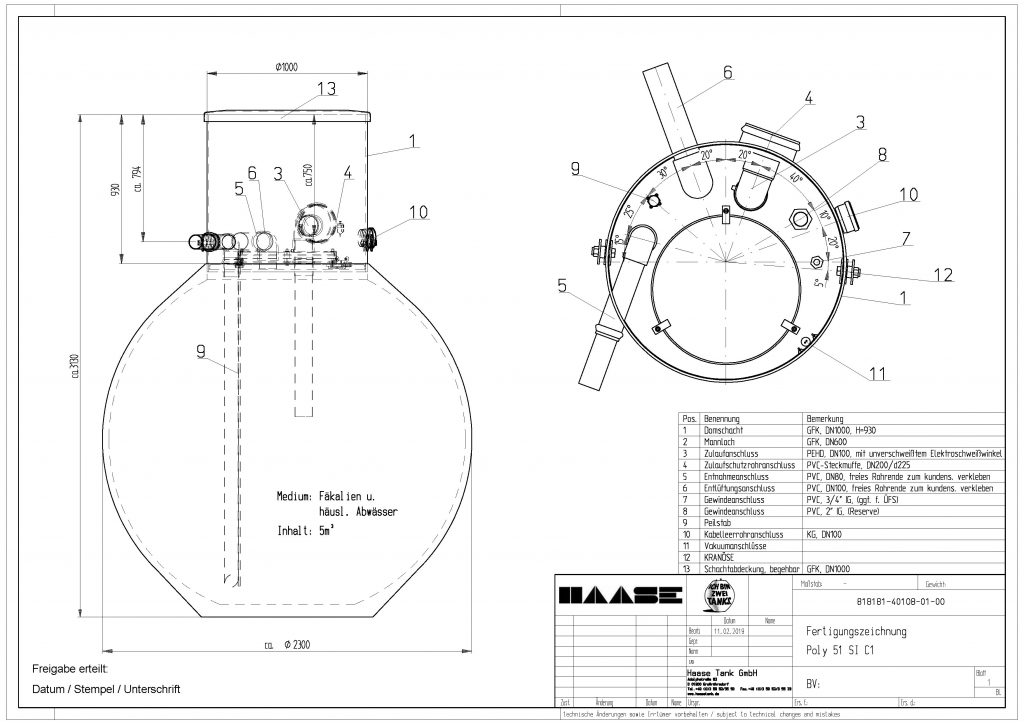
Technical drawing of the underground storage tank for fecal matter and domestic waste water.
Yearly heat recovery over 9,000 MWh
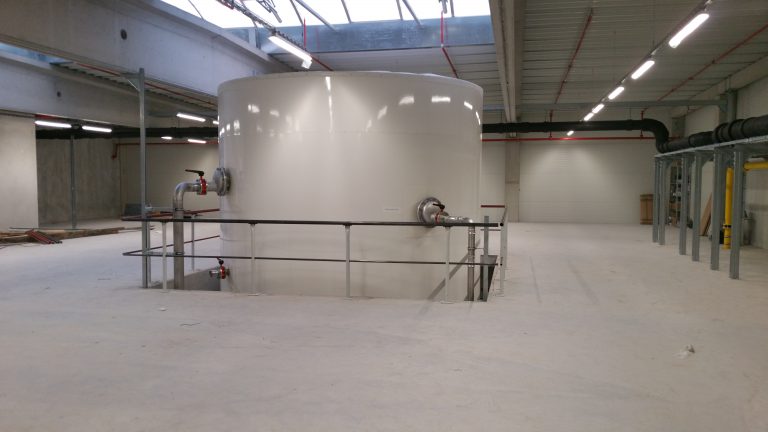
79 m³ hot water tank for Germany’s largest hotel laundry
The Haase hot water tank has a volume of 79,000 liters
The Greif Textile Mietsysteme company has set up the largest and most modern hotel laundry operation in Berlin, Germany. The aim was to incorporate latest proven technology and reclaim thermal energy were economically viable. This will greatly reduce operating costs and therefore ensure the most competitive operation..
Hot water costs of such an industry represent a major part in the cost structure. To reduce these it was decided to invest in latest proven technology together with a sophisticated energy concept. This step would result in a very efficient and cost saving process. The big advantage, due to the much lower processing costs , is that the factory could now be located much closer to their customers eliminating long transport time and costs.
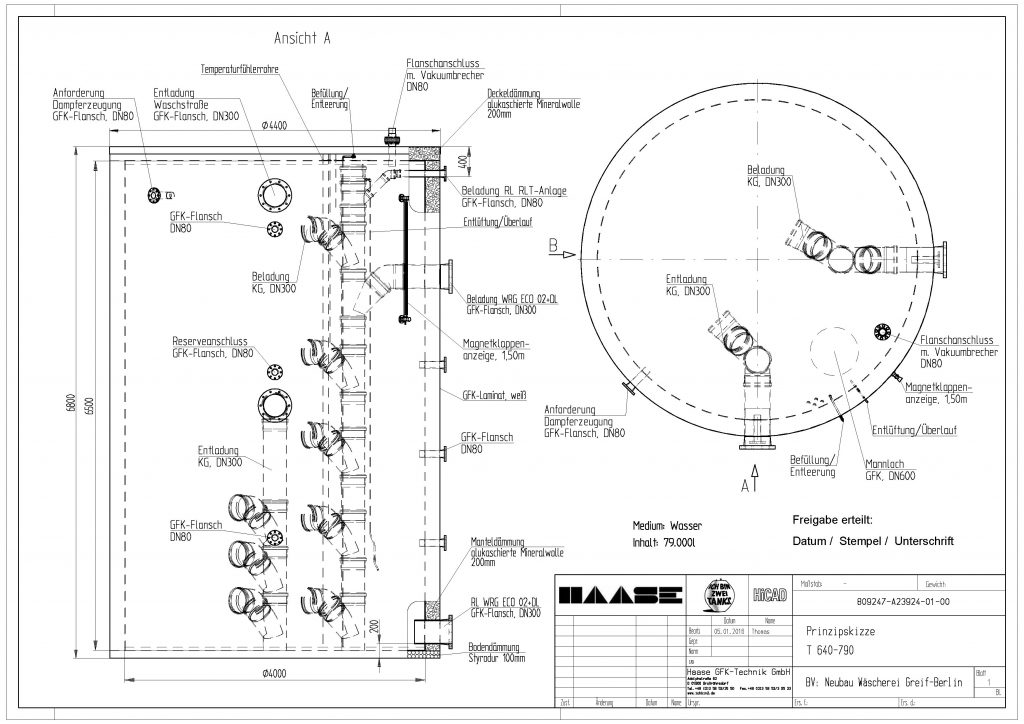
Heat recovery is an important part in reducing energy costs: Our 79,000l Haase tank is the center piece in the heat recovery system. It was designed to utilize waste heat from hot waste water coming from the washing machines and steam boiler, the air compressor system, flue recovery from steam boiler, as well as recovery from the building heating system. This recovered energy is then used for the continuous hot water supply to the five industrial washing machines.
The first process is the heat recovery from the hot wastewater. For this a 10,000l Haase tank accumulates the remaining thermal energy from the hot wastewater. This hot waste water is then pumped via a cross flow heat exchanger to heat up the incoming cold water using a variable pump to control the counter flow. This process increases the cold water temperature generally from 12°C to 45 °C , before it is transferred to our central thermal recovery tank. There the temperature is increased to 60° from other recovery sources.
In the first step, the wastewater is collected in a 10 m³ Haase flat-bottom tank. The waste heat from the wastewater increases the temperature of the process water from 12 °C to 45 °C before it flows into the hot water tank (79,000l). In the storage tank, the process water is then heated up to approx. 60 °C using various heat sources.
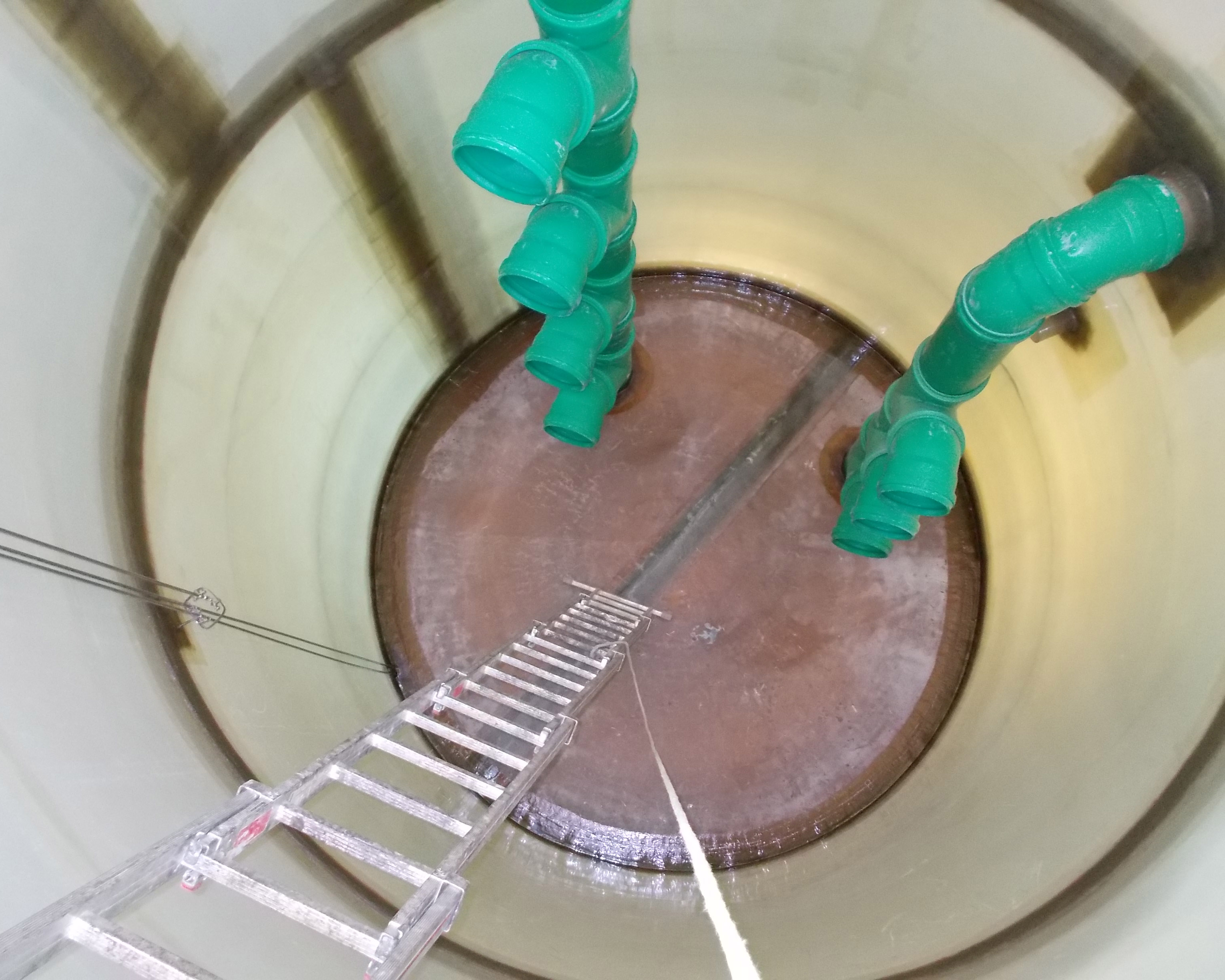
The two air compressors constantly create heat at approx. 65 °C. This is transferred to the top part of our central tank.
In the middle part of the tank waste heat with approx. 60 °C is fed in from the return of the building heating (300 kW). The lower section of the storage tank is loaded with heat from the flue recovery from the 4 MW steam boiler, which is used for various processes in the laundry.
After the system was commissioned it was confirmed that the heat recovery functions as designed resulting in major cost savings since it increased the water temperature from 12 °C to approximately 60 °C. This eliminates the use of a steam boiler for this temperature increase.
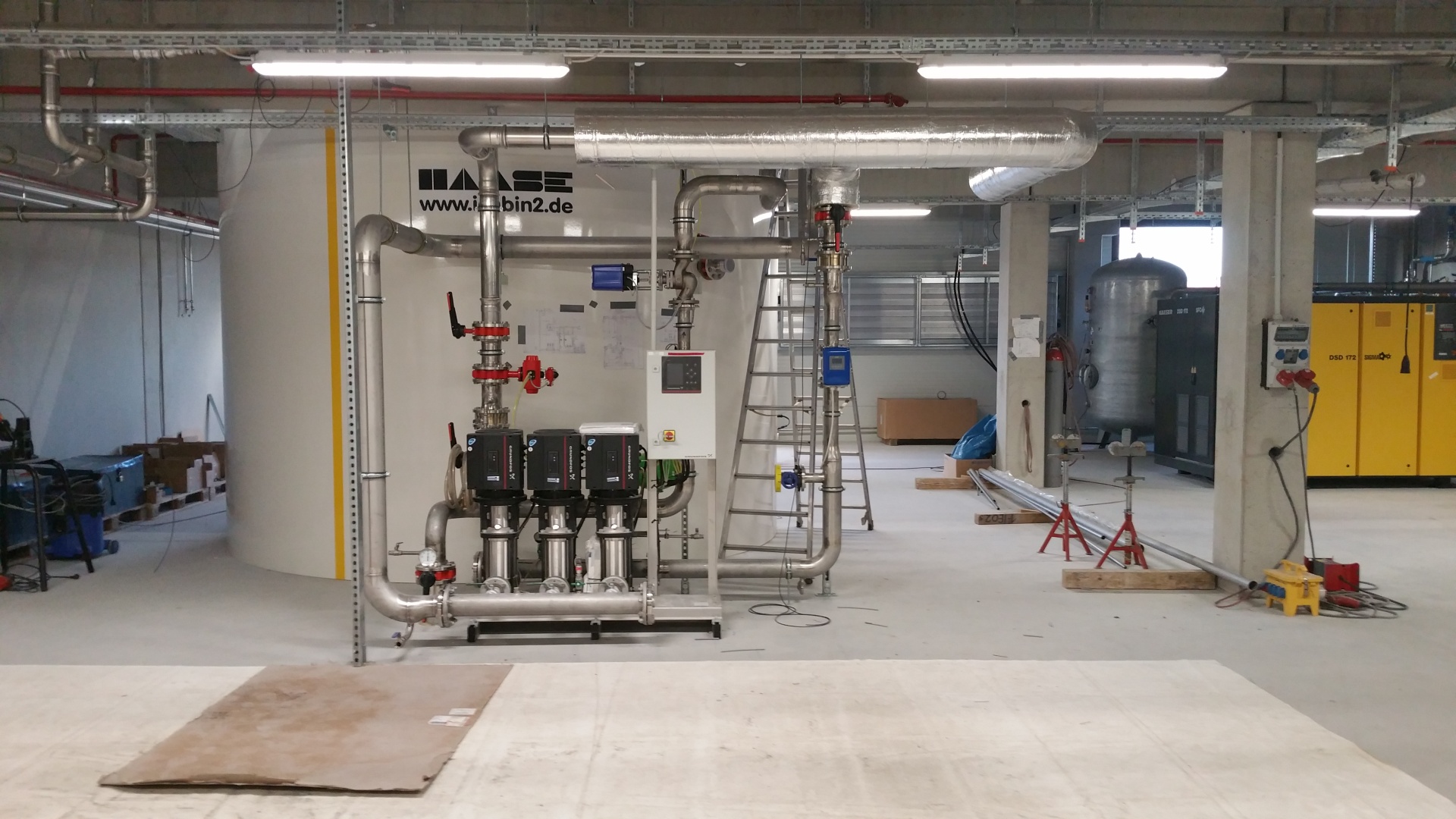
Just a few weeks after commissioning the system, it could be confirmed that the saving targets have been met and even exceeded.
The steam boiler operates now with an efficiency of 95 %. By using the waste heat from the boiler and the compressed air generators, around 17,500 kWh per day can be saved; another 1,500 kWh/d results from the use of the return of the building heating. In the next stage of expansion, the waste heat from the boiler should raise the hot water temperature to 55 °C. The result of the thermal recovery system are daily savings of around 25,000 kWh.
Haase basement tank for all earthquake zones
Many homeowners and tank installers in Germany are often not even aware of this: Here too, in the seemingly safe heart of Europe, a large area is designated as an earthquake zone. So if you live in one of these areas and want to install a new tank for storing heating oil, you should make sure that it is also approved for the corresponding earthquake zone.
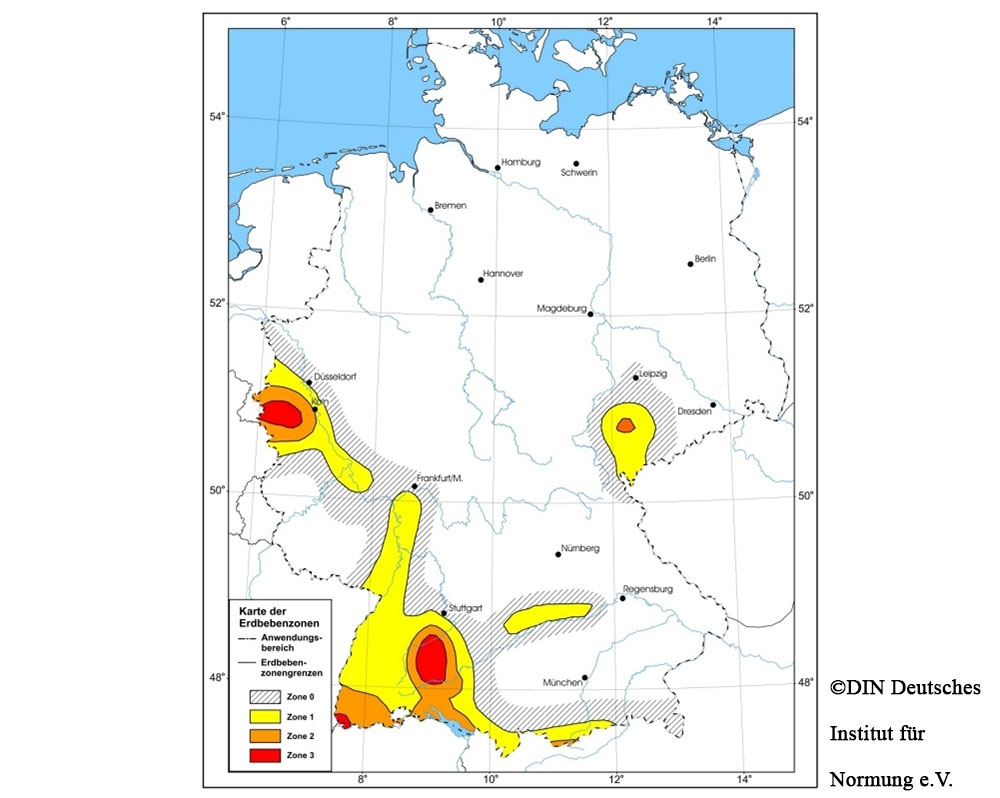
The classification of the regions in the earthquake zones is illustrated by a map of the German Geo Research Center. If you are not sure whether your region is classified accordingly, you can carry out an online query for your place of residence here.
https://www.gfz-potsdam.de/din4149_erdbebenzonenabfrage/
Haase was the first tank manufacturer to prove the seismic safety of its tanks and received approval from the German Institute for Building Technology (DIBt). The necessary stability tests have once again shown what the material GRP can do: For most tank types, the double-walled design, which has been tried and tested for several decades, can be used without additional effort.
In earthquake zone 3, the highest in Germany, only an inexpensive non-slip mat has to be placed under the tank instead of the commonly used felt. If you want to install a tank in an earthquake-prone area, you should therefore have the corresponding approval from the German Institute for Building Technology (DIBt) presented for this tank.
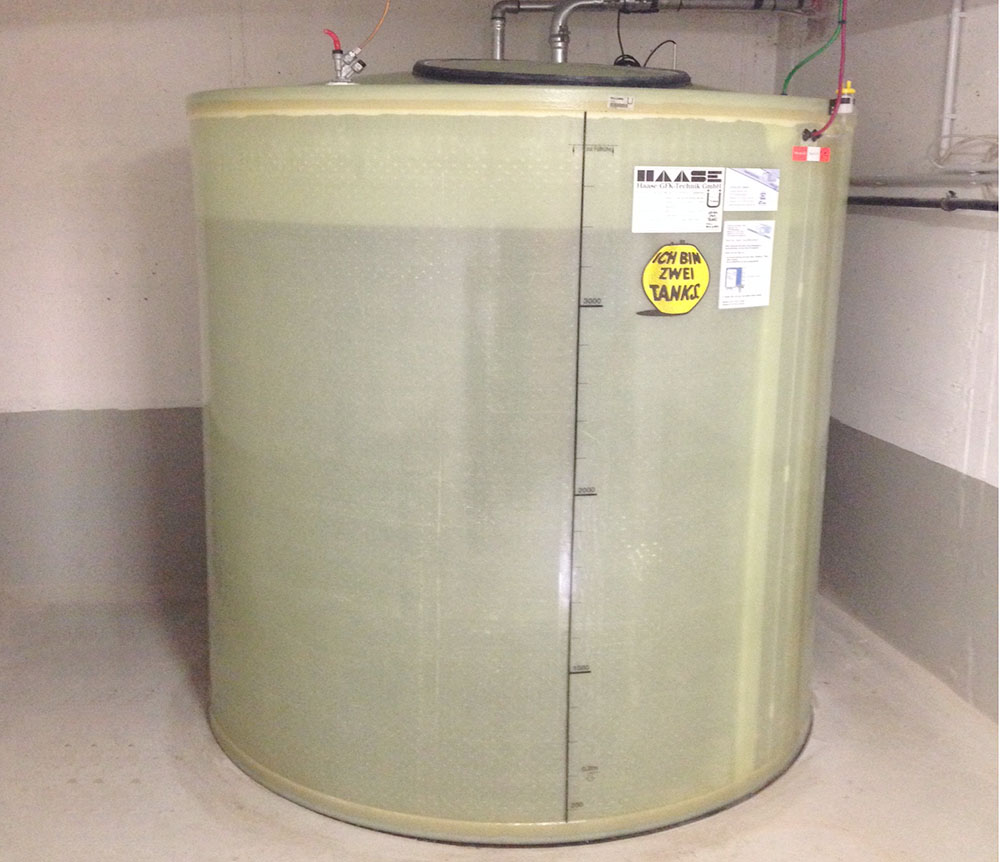
As you can see, you see nothing: a double-walled Haase basement tank with anti-slip mat that was installed in an area of earthquake zone 3. The approval of the DIBt does not impose any further requirements.
Flat bottom tank for a brine thermal bath in Bad Elster
The positive effects of mineral healing water on the human organism have been used for pain relief and healing for hundreds of years. The healing springs in Bad Elster have only been developed for a short time, which is the responsibility of the Sächsische Staatsbäder GmbH.
When building the new brine thermal bath, the focus from the very beginning was on the resistance of the tanks and pipes to the highly saline and aggressive brine solution. The search for a suitable material quickly led to glass fiber reinforced plastic (GRP). The Haase company installed a total of 4 flat-bottom tanks for different applications, with the usable volume varying between 1,600 liters and 35,200 liters.
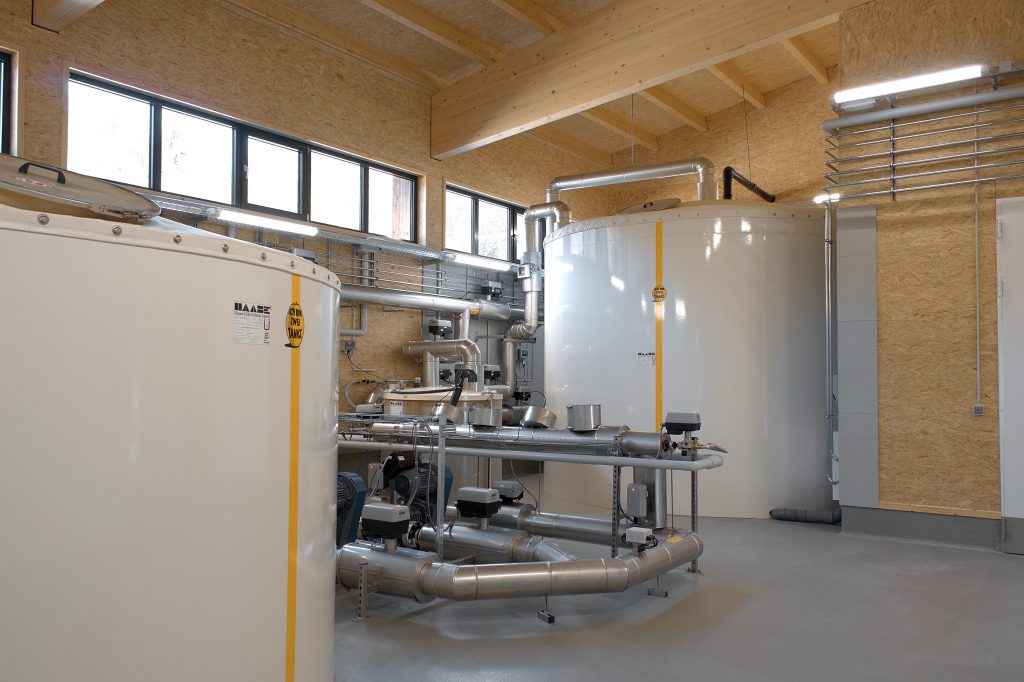
These Haase flat-bottom tanks were designed as collecting tanks, calming and overflow basins as well as cold water tanks. 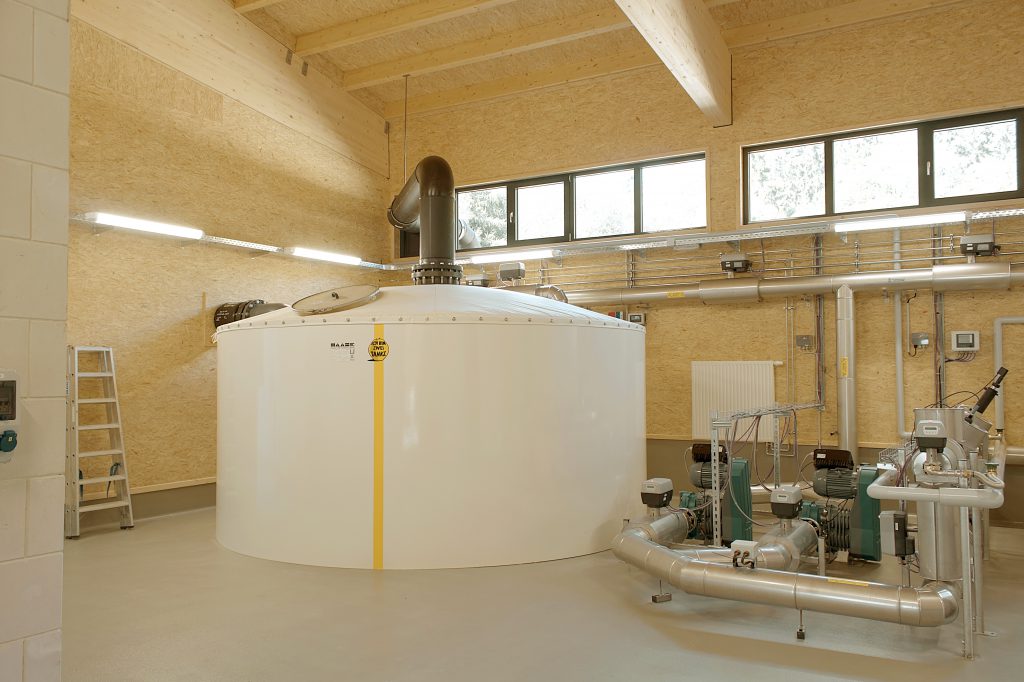
This flat bottom tank is used as an overflow basin. 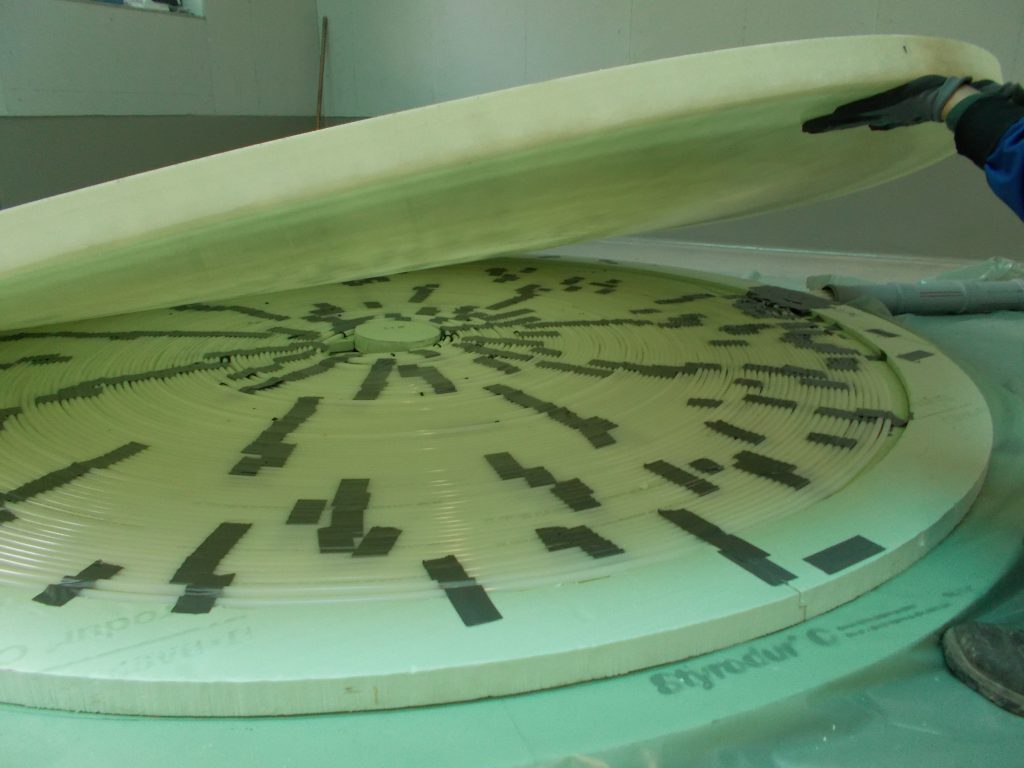
Two of the four falt-bottom tanks are equipped with heating and insulation. 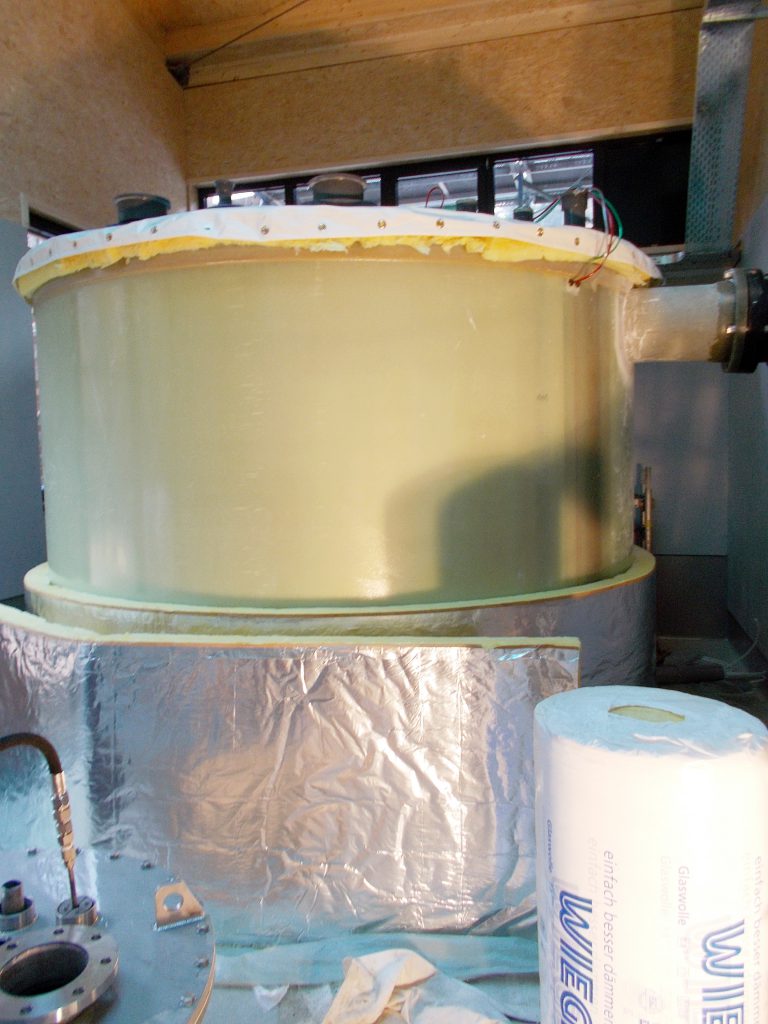
The flat-bottom tanks were assembled on site and connected to the system using a GRP flange.


